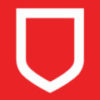Three Archetypes of the Future Post-Secondary Instructor
Since the dawn of electronic media and its role in higher education, we have been hearing about the end of the “sage on the stage” and the emergence of the “guide on the side.”
In the past decade, we have seen many faculty members embrace the transformation of their role: delivering live video chats, facilitating online discussions in the wee hours of the morning and reviewing online student portfolios. Yet, at the same time, many faculty have also embraced media to capture their “sage on the stage” lectures for the students in their online courses without much additional pedagogical innovation.
As we look into the next decade, we can imagine a set of online instructor archetypes that will provide a more nuanced spectrum of roles and skills originally envisioned for them. Let’s meet the “celebrity free agent,” the “ever-connected coach” and the “course hacker.”
The Celebrity Free Agent
When Sebastian Thrun left Stanford University to start Udacity, a massive open online course (MOOC) provider, many began to wonder aloud whether this would be the end of the traditional faculty-university relationship. If star-powered faculty at major universities could strike out on their own, or perhaps form partnerships and affiliations with each other, could they begin to erode market share from the traditional institutions? Time will tell. Certainly, we can expect more faculty members who have top-ranked credentials and excellent presence on-screen to leverage their expertise into powerful new educational brands. These projects will feature more knowledge dissemination than active instruction, but could easily provide both students and institutions with new options. Evidenced by the 100,000+ students registered for Thrun’s MOOC offered through Udacity, or the recent online course project between Clay Christensen and the University of Phoenix, one can see how the traditional measures of faculty-institutional loyalties will be challenged in the next decade.
The Ever-Connected Coach
For many instructors without the star-power of a Thrun or Christensen, the online environment will provide other opportunities for role differentiation. This archetype is the closest to the notion of the “guide on the side.” Using a wide range of social media and networking tools, the Ever-Connected Coach can shift from disseminator of knowledge to learning coach. They might provide an ongoing stream of articles, tips and insights via Twitter. They could form user communities made up of current and past students and employers on LinkedIn to help students master skills that increase their employability, as well as build networks to help them succeed post-course and post-graduation. Conceivably, these instructors might realize they too could break formal ties with the institution, allowing them a more flexible and mobile lifestyle. The next-generation model is similar to that of StraighterLine, a low-cost online education provider, but focused on providing institutions with an in-demand pool of online instructors (excluding the ready-made course content), organized by discipline and highly trained in a set of online, social and mobile tools that maximize learner engagement and retention. An institution looking to scale a program might pair a celebrity faculty member or MOOC with a team of instructors or coaches from an online provider to add a higher level of engagement.
The Course Hacker
The last and perhaps most speculative role of the future online instructor will be the person who digs deep into the data that will be available from next generation learning systems to target specific learning interventions to specific students — at scale. The idea of the Course Hacker is based on the emerging role of the Growth Hacker at high-growth web businesses. Mining data from web traffic, social media, email campaigns, etc., the Growth Hacker is constantly iterating a web product or marketing campaign to seek rapid growth in users or revenue. Adapted to online education, the Course Hacker would be a faculty member with strong technical and statistical skills who would study data about which course assets were being used and by whom, which students worked more quickly or slowly, which questions caused the most problems on a quiz, who were the most socially active students in the course, who were the lurkers but getting high marks, etc. Armed with those deep insights, they would be continually adapting course content, providing support and remedial help to targeted students, creating incentives to motivate people past critical blocks in the course, etc.
In the coming decade, faculty will have a range of tools to make content more accessible and engaging, better platforms and systems to connect with learners (and connect learners to each other and the broader world) and more data than they ever imagined about how students learn. While some may choose to further specialize with respect to how they teach online — going deep — many will incorporate some aspects of each of these archetypes and become even more effective online instructors, ever-seeking to improve learning outcomes.
Guest Post on The Evolllution
